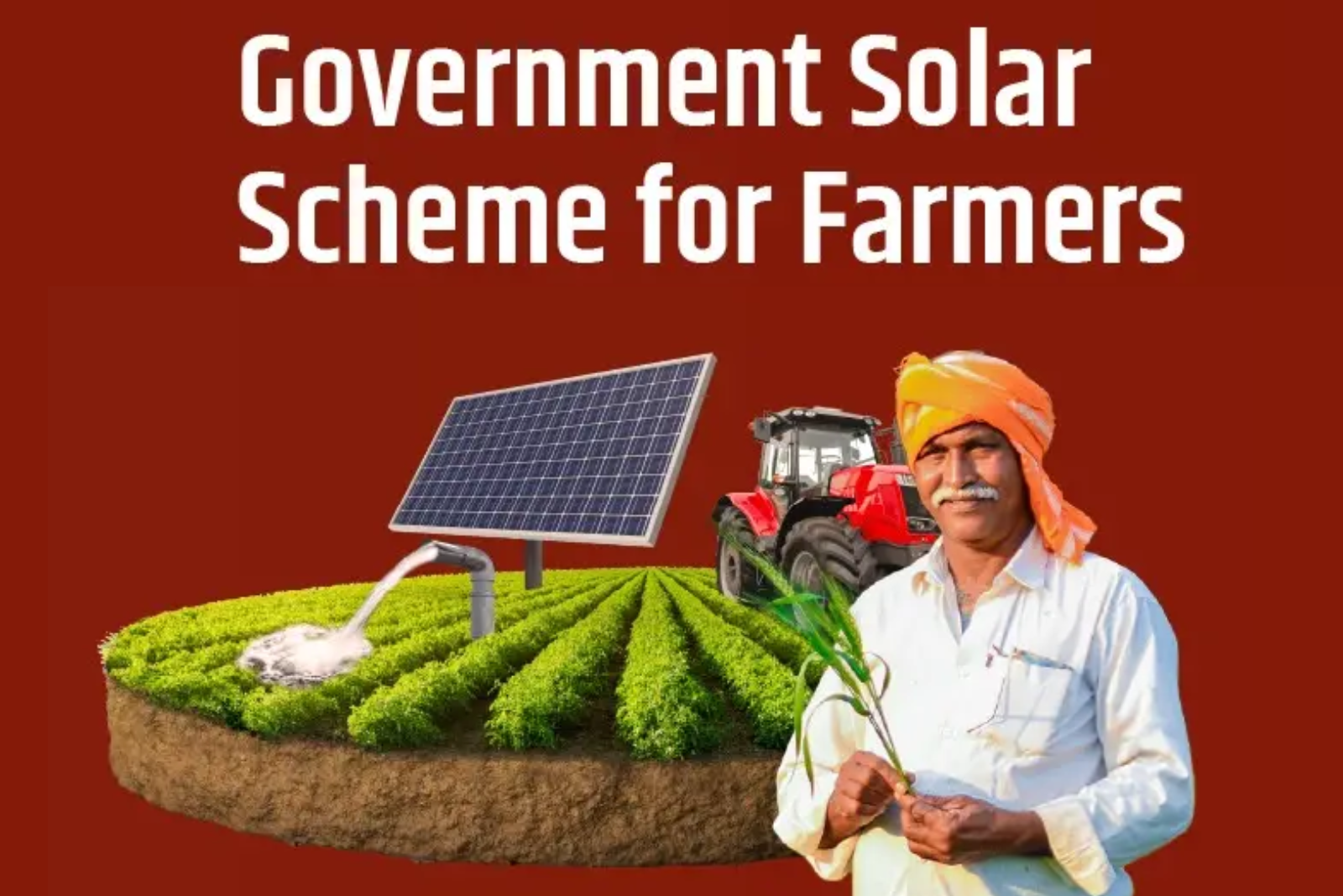Government Solar Scheme for Farmers
- Home
- Blogs

Running a farm is no easy job — and high fuel bills or unreliable electricity only make it harder. To help farmers reduce their costs and depend less on diesel and grid power, the Indian government has launched several solar schemes for agriculture. These programs help farmers install solar pumps and solar-powered systems with heavy subsidies.
If you’re a farmer or know someone in agriculture, this guide will explain everything about the Government Solar Scheme for Farmers, who can apply, how it helps, and what steps to take.
Also Read: Solar Water Pump
Why the Government is Promoting Solar Energy in Farming
Farming needs electricity — for irrigation, lighting, storage, and more. But in many villages, power supply is irregular or completely unavailable. Diesel is expensive, and pollution from generators is harmful.
That’s why the government is pushing solar energy as a clean, low-cost, and long-term power source for farms. Solar works well during the day — exactly when most farming operations happen.
Also Know: Solar Water Pumps in Agriculture
Main Government Solar Scheme for Farmers – PM-KUSUM Yojana
The PM-KUSUM Scheme (Pradhan Mantri Kisan Urja Suraksha evam Utthaan Mahabhiyan) is the main national solar program for farmers in India. It was launched to help farmers shift to solar energy and reduce their reliance on diesel or electricity for irrigation.
PM-KUSUM has 3 key parts:
Component A – Solar Power Plants on Farmland
Farmers or groups can set up small solar plants (up to 2 MW)
Install them on unused land or even over canals
Extra power generated can be sold to the local DISCOM (power company)
Helps farmers earn additional income
Also Read: Solar Power Solutions
Component B – Standalone Solar Pumps
- Solar-powered water pumps for irrigation
- Best for areas with no power grid or limited electricity
- Ideal for small and marginal farmers
- Works well in daylight, no battery required
Component C – Solar Pumping with Grid Connection
Grid-connected solar pumps that can send extra electricity back to the grid
Farmers use solar energy during the day and sell surplus power
Helps reduce electricity bills and creates a second source of income
Benefits of Government Solar Schemes for Farmers
Benefit | What It Means |
Reduced Fuel Cost | No need for diesel or electricity from the grid |
Free Energy from Sun | Solar power is clean and free to use |
Increased Income | Sell extra power to DISCOMs |
Government Subsidy | Big part of cost covered under the scheme |
Less Pollution | No smoke or harmful emissions |
Works in Remote Areas | Ideal for villages with poor power access |
Who Can Apply for the Solar Scheme?
The scheme is open to:
Individual farmers
Farmer producer groups (FPOs)
Cooperatives and panchayats
Water user associations
Small and marginal landowners
What Can You Use the Solar Setup For?
Under government schemes, farmers can use solar power for:
Water pumping through tubewells and borewells
Drip irrigation and sprinkler systems
Storage of perishable crops in solar-powered cold rooms
Solar fencing for crop protection
Solar lights for field and farm security
Documents Required to Apply
To apply under the scheme, farmers usually need:
- Aadhaar Card
- Land ownership proof
- Bank account details (linked with Aadhaar)
- Passport-size photo
- Mobile number
- Copy of land revenue receipt or land map
How to Apply for the Government Solar Scheme
- Visit your state’s official renewable energy website
- Find the PM-KUSUM or Solar Agriculture Scheme section
- Fill in the online application form
- Upload required documents
- Wait for verification and approval
- Once approved, the subsidy amount is adjusted directly with the system provider
- Installation is done by an approved vendor
KLK Ventures helps farmers with the entire process — from application to installation.
State-wise Support and Variations
While PM-KUSUM is a national scheme, many states offer additional incentives or faster processing. For example:
- Rajasthan – One of the most active states under PM-KUSUM
- Madhya Pradesh & Uttar Pradesh – Strong solar pump adoption
- Maharashtra & Gujarat – Additional top-up subsidies
- Punjab & Haryana – Special focus on small landholders
Each state has its own quota, timeline, and selection process.
FAQs
Q1. Can I get a solar pump through the government scheme?
Yes, under PM-KUSUM, you can apply for a subsidized solar water pump.
Q2. What is the subsidy percentage?
Subsidy usually covers 60–90% depending on your state and the scheme component.
Q3. Do I need to own land to apply?
Yes, land ownership or lease documents are required.
Q4. Can I earn money by selling power to the grid?
Yes, under Component A and C, you can sell excess solar power and earn.
Q5. Does KLK help with subsidy applications?
Absolutely. KLK Ventures supports farmers with the complete process.
Q6. Is the solar system safe and durable?
Yes, systems come with strong build quality and long-term warranties.
Q7. How long does it take from application to installation?
Usually between 30–60 days, depending on the approval speed and location.
Conclusion
The Government Solar Scheme for Farmers is a golden opportunity to reduce farming costs, save energy, and make agriculture more sustainable. With solar power, farmers don’t just save money — they also gain freedom from unreliable electricity and fuel.
With the help of trusted partners like KLK Ventures, it’s easy to shift to solar with expert support and access to government benefits.
If you’re a farmer looking for better power options, solar is the way forward.
